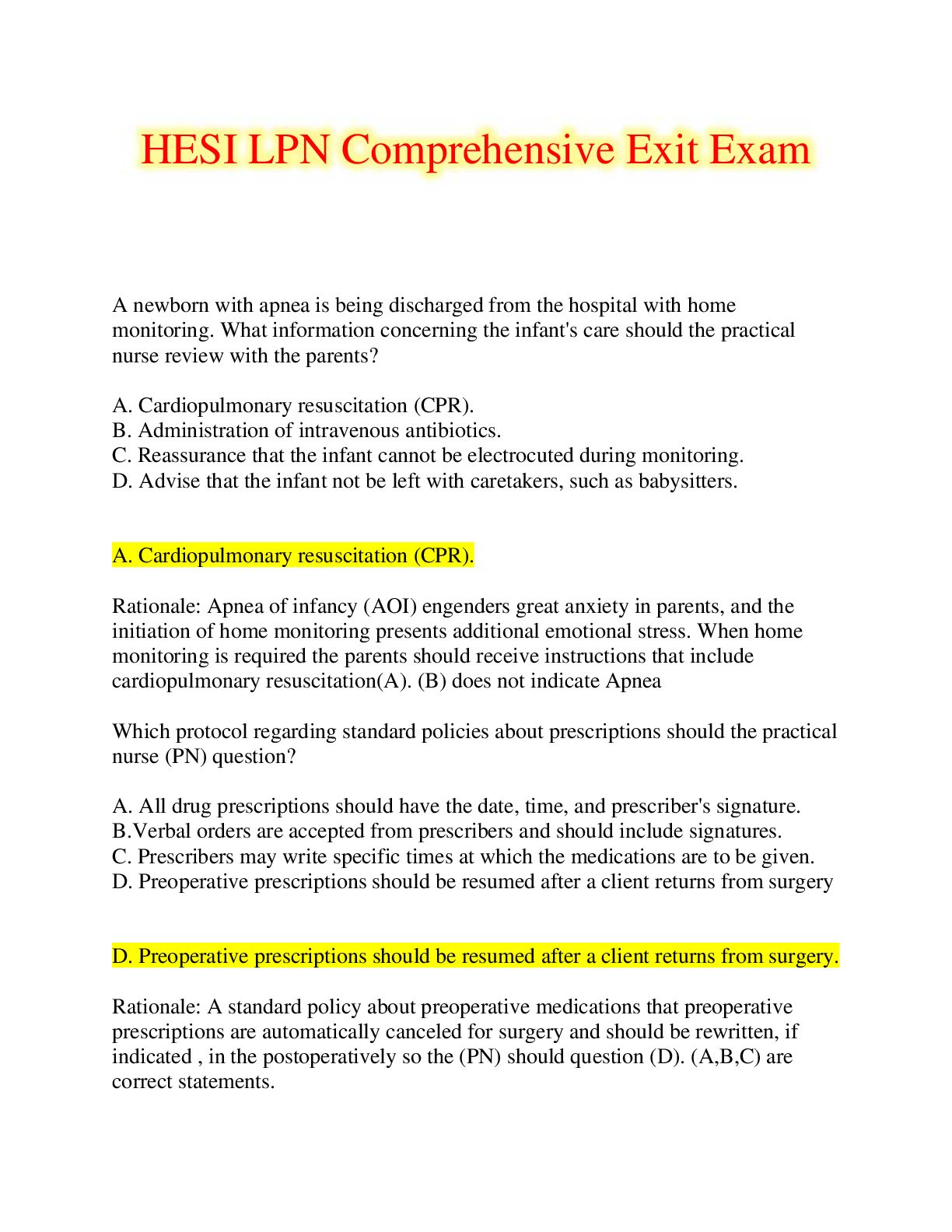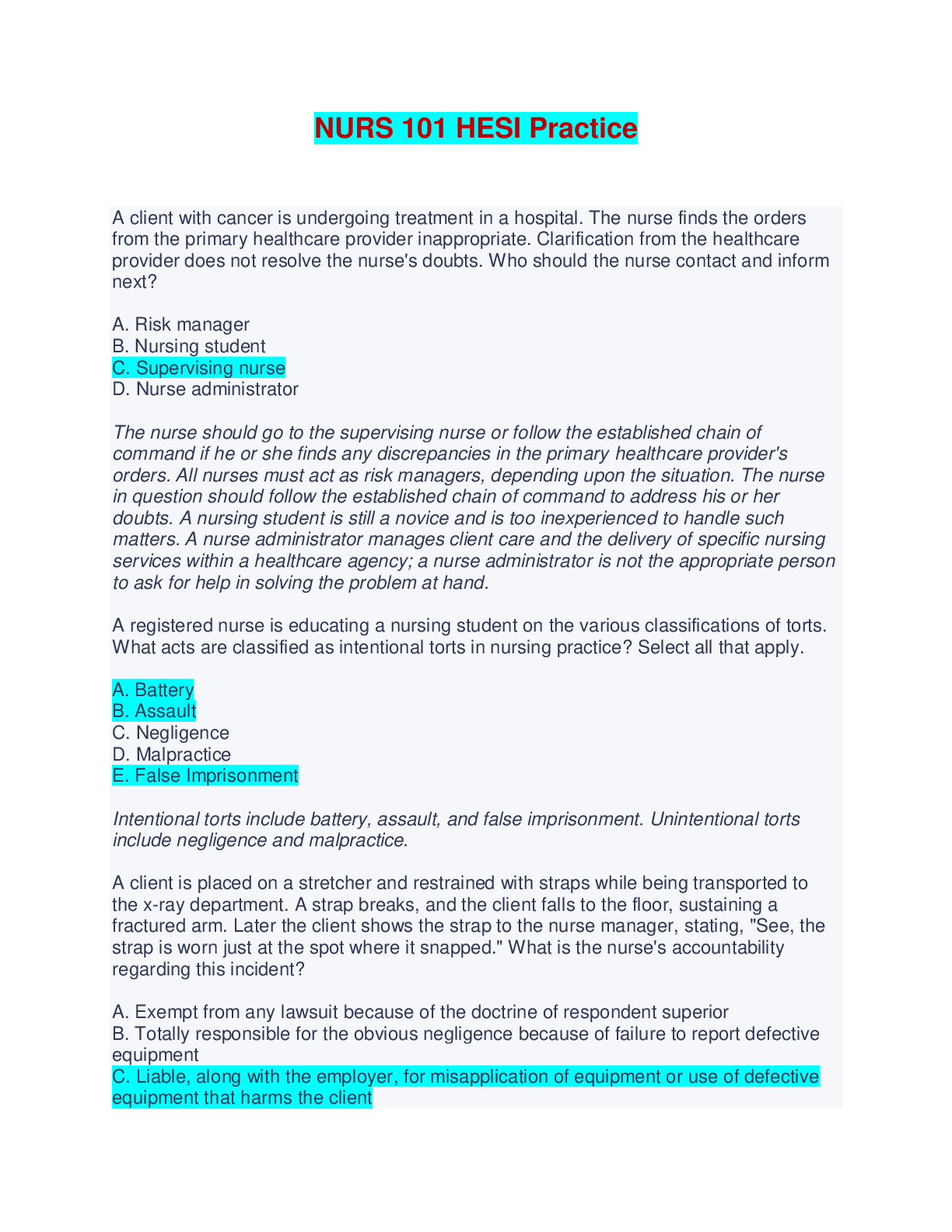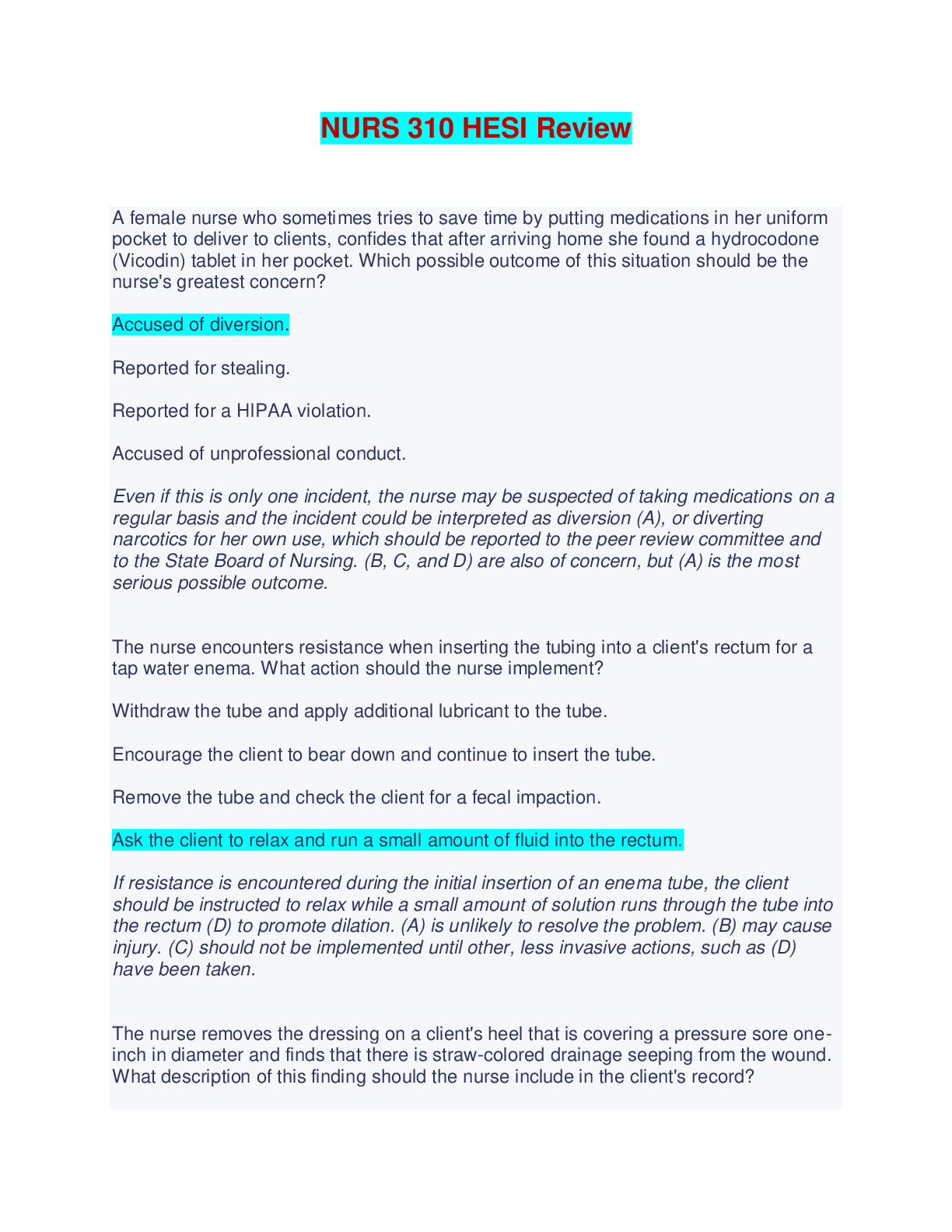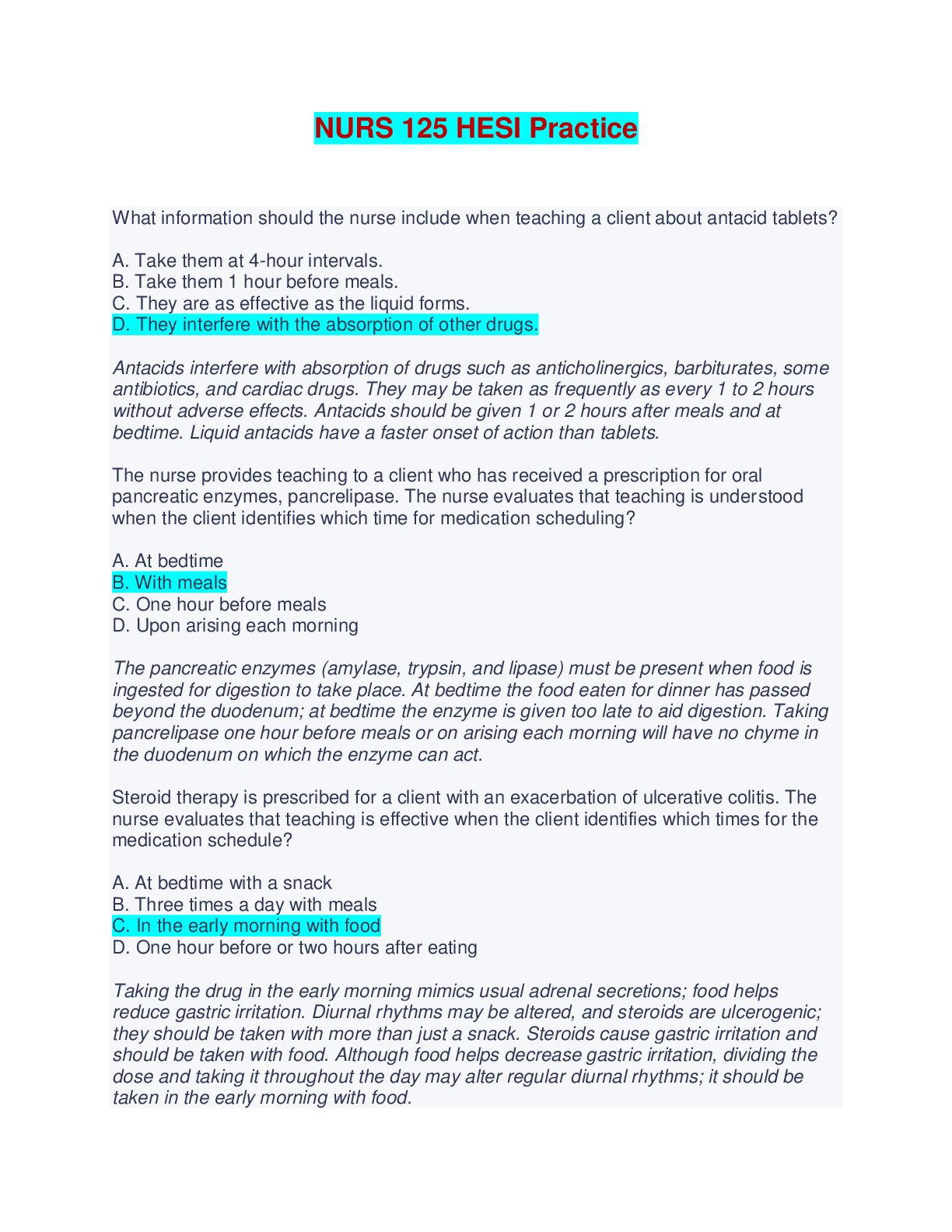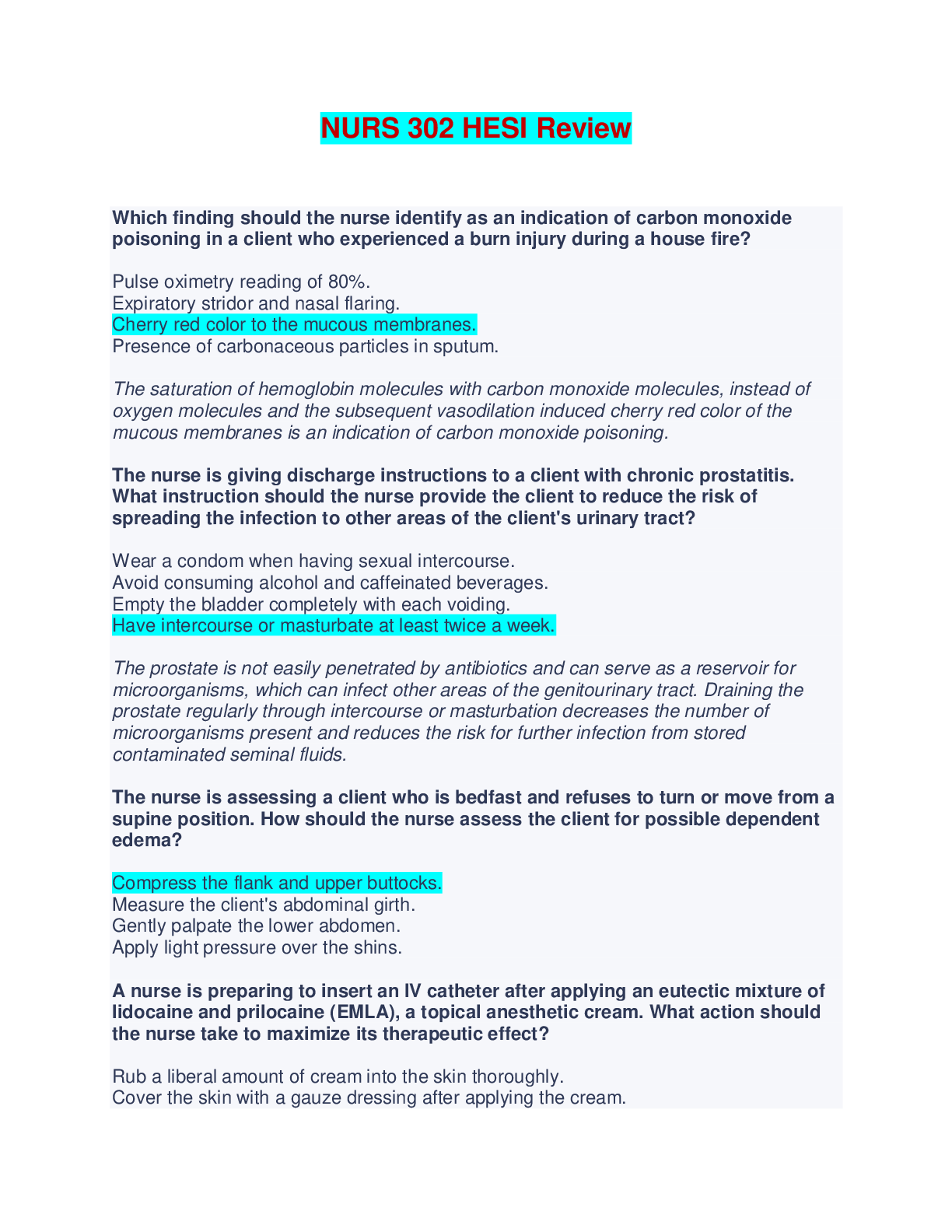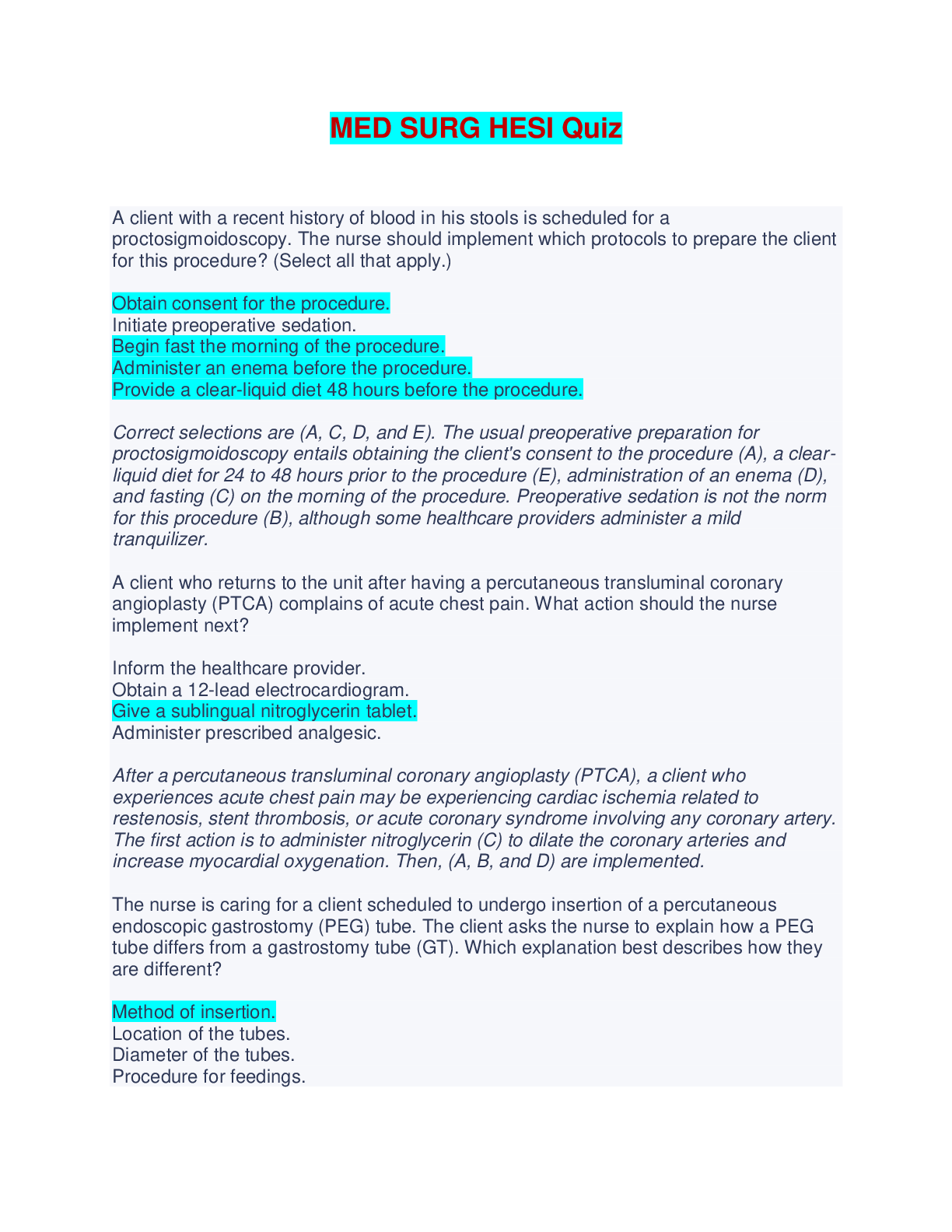NURS 135 HESI Practice - Questions, Answers and Rationales
Document Content and Description Below
NURS 135 HESI Practice - Questions, Answers and Rationales The school nurse conducts a class in nutrition planning for parents. What is the goal of school health nursing programs? A. Health promotio... n B. Disease management C. Chronic care management D. Environmental surveillance The goal of school health nursing programs is health promotion through a school curriculum. A class on nutritional planning for parents contributes to health promotion. Disease management is one of the many programs of community health centers. These centers provide primary care to a specific client population within a community. Nurse-managed clinics provide nursing care with a focus on acute and chronic care management. The occupational health nurse may conduct an environmental surveillance for health promotion and accident prevention in the work setting. A client with hepatic cirrhosis begins to develop slurred speech, confusion, drowsiness, and a flapping tremor. Which diet can the nurse expect will be prescribed for this client based upon the assessment? A. No protein B. Moderate protein C. High protein D. Strict protein restriction Because the liver is unable to detoxify ammonia to urea and the client is experiencing impending hepatic encephalopathy coma, protein intake should be moderately restricted. Strict protein and no protein restrictions are not required because clients need protein for healing. High protein is contraindicated in hepatic encephalopathy. What is the role of shark cartilage in the management of human immunodeficiency (HIV) and acquired immunodeficiency syndrome (AIDS)? A. Shark cartilage enhances immunity B. Shark cartilage reduces oral thrush C. Shark cartilage is a complementary therapy D. Shark cartilage is a nutritional supplement Shark cartilage is considered as an alternative or complementary therapy to prescribed medications for clients with HIV and AIDS. Lymphocyte transfusions and bone marrow transplants are used to improve immunity in clients with HIV and AIDS. Lemon juice and lemongrass may provide relief from oral thrush in some clients with HIV and AIDS. A high-calorie, high-protein diet is advised to clients with HIV and AIDS to improve their nutritional status. When teaching an adolescent with type 1 diabetes about dietary management, what instruction should the nurse include? A. Meals should be eaten at home. B. Foods should be weighed on a gram scale. C. A ready source of glucose should be available. D. Specific foods should be cooked for the adolescent An adolescent with type 1 diabetes must carry a source of simple sugar (e.g., glucose tablets, Insta-Glucose, sugar-containing candy such as LifeSavers) to rapidly counteract the effects of hypoglycemia. This should be followed by a complex carbohydrate and a protein. Stating that meals should be eaten at home is an unrealistic and unnatural instruction for an adolescent. Stating that foods should be weighed on a gram scale is an unnecessary and time-consuming procedure. The adolescent should be made to feel a part of the family; the recommended diet is nutritious and no different from that of the rest of the family. The parents of a preschooler inform the nurse that their child often develops diarrhea and ask whether there might be anything wrong with the child's stomach. Upon assessment, the nurse also finds that the child has poor oral care and is at risk for dental caries. What is the most probable cause for the child's health issues? A. The family often consumes fast foods. B. The parents neglect the child's dietary needs. C. The family does not follow hygienic practices. D. The child consumes excessive amounts of fruit juice. If the child consumes excessive fruit juice or sweetened beverages, it increases the risk for dental caries and gastrointestinal conditions, such as chronic diarrhea. Consuming fast foods often result in childhood obesity, because fast foods are high in fats and starches. Neglecting the dietary needs or not following hygienic practices may cause gastrointestinal problems or make the child susceptible to infections. The nurse is providing care to an infant who is diagnosed with cystic fibrosis (CF). Which parental statement indicates the need for further education related to the potential for poor growth? A. "My child's diagnosis causes delayed bone growth." B. "My child will have a poor appetite, which will lead to poor growth." C. "My child will have increased oxygen demands, which will lead to poor growth." D. "My child will have a decreased ability to absorb nutrients, which will cause poor growth." Pediatric clients who are diagnosed with CF experience poor growth despite a healthy appetite and diet; therefore, the parental statement indicates that the infant's poor appetite will lead to poor growth indicates the need for further education. Pediatric clients diagnosed with CF experience poor growth due to delayed bone growth, increased oxygen demands, and a decreased ability to absorb nutrients. When assessing the characteristics of an adolescent with anorexia nervosa, how does the nurse expect to describe the adolescent? A. Manic B. Rebellious C. Hypoactive D. Perfectionistic [Show More]
Last updated: 1 year ago
Preview 1 out of 10 pages
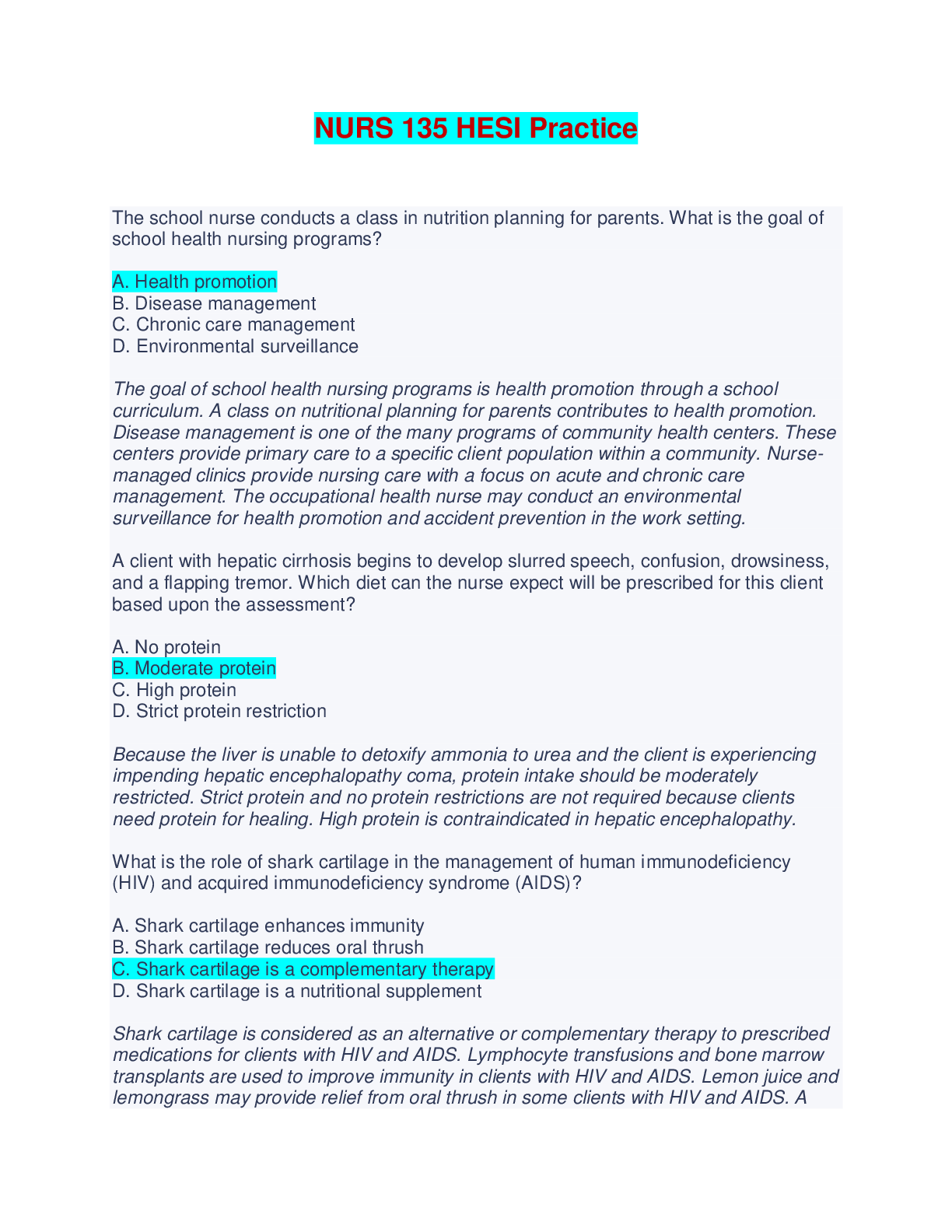
Buy this document to get the full access instantly
Instant Download Access after purchase
Buy NowInstant download
We Accept:

Reviews( 0 )
$13.00
Can't find what you want? Try our AI powered Search
Document information
Connected school, study & course
About the document
Uploaded On
Nov 16, 2023
Number of pages
10
Written in
Additional information
This document has been written for:
Uploaded
Nov 16, 2023
Downloads
0
Views
42



 V1 V2.png)













